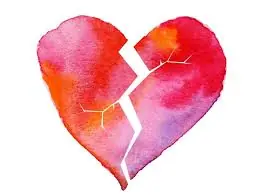Cardiovascular disease is the number one cause of death for men and women in this country.
Jennifer Haythe, MD, Director of Cardio-Obstetrics, Internist at NYPH/Columbia, and Co-Director of the Women’s Center for Cardiovascular Health at Columbia.
Before I went back to school, I wouldn’t have known the fact that cardiovascular disease is the number one cause of death for women in the US. My first thought, especially for women, would have been cancer—and therein lies a big part of the problem.
A survey conducted a few years ago by the Women’s Heart Alliance interviewed 1,011 U.S. women aged 25-60 years and collected physician survey data from 200 primary care physicians and 100 cardiologists as well. The goal of the surveys was “to determine knowledge, attitudes and beliefs regarding heart disease in women.”
The results mirrored my own thinking. Let’s separate the various strands of this knotty problem.
Heart disease killed more than 300,000 women in the US in 2020
First, the researchers found that 45% of women age 25 to 60, and 35% percent of women 50 and 60—that included me—were unaware that heart disease killed more than 300,000 women in the US in 2020 (314,186 to be exact) – that’s 1 in 5 women. Add to that another 15.2 million women worldwide who die from heart disease annually.
Even more surprising—only 13% of Americans know how great a woman’s risk is for developing heart disease. That percentage of awareness falls even more in women with lower levels of education and income, and women of color.
71% of women almost never discussed heart health with their physicians
The next shocking fact: 71% of women almost never discussed heart health with their physicians, assuming their doctors would ask if there were a problem.
To further curl your hair, physicians often didn’t or don’t discuss cardiovascular disease with their female patients; because while spending only 17.5 minutes per patient, according to studies, either the patient had a more immediate health issue, or she didn’t fully report her symptoms.
This reflects a wholesale lack of interest (or knowledge) in making prevention a priority before a woman experiences symptoms, or worse, has a cardiac incident.
We all have seen someone in a TV show or movie pretending to have a heart attack (usually a man). He clutches his chest, his breath becomes short and shallow, his eyes bug out, and he makes some dramatic yelp as he falls onto the floor, or into a chair if he’s lucky.
Realistically, heart attacks come in several different flavors and their symptoms vary. Let’s begin with maybe the most dangerous —The Silent Heart Attack.
Silent Heart Attack
The symptoms of a silent heart attack can be subtle, and often dismissed as sudden fatigue, nausea, or shortness of breath that occur when exercising or just out and about. Those symptoms disappear when resting, according to cardiologist Suzanne Steinbaum, MD, director of Women’s Heart Health at Lenox Hill Hospital in New York City.
Additionally (or differently), especially in women, there might be nontraditional signs like unexplained fatigue, pain or discomfort in the throat, neck, or jaw, or what seems like heartburn—symptoms so mild, they’re barely noticed, or that go completely unnoticed during times of heightened stress.
The damage from these silent attacks is usually only discovered accidentally while testing a woman’s heart for other reasons. If we have had a silent heart attack, we are 3x more likely to die from heart disease.
One might also experience the following heart attack symptoms:
-
- Feeling very full, as though you have eaten a large meal, even if you haven’t eaten recently
- Followed by feelings of indigestion and a large person sitting on your chest
- Ribs tightening and becoming short of breath
- Pain in your right shoulder and arm (not left, as many believe)
- Pain in the front of your neck and up into your jaw
I suggest you memorize all possible heart attack symptoms. Make a copy and keep it on your phone or pin it on your fridge. I have!
In Part Two of this discussion, I will talk about some empowering choices we can make to help prevent heart disease and keep a heart attack a thing of fiction.
Until next time… Be Vibrant!
Read Next …
Women and Heart Disease - Part 2
Some important tests that will help women avoid a heart attack – a silent or not-so-silent one – and help prevent heart disease


